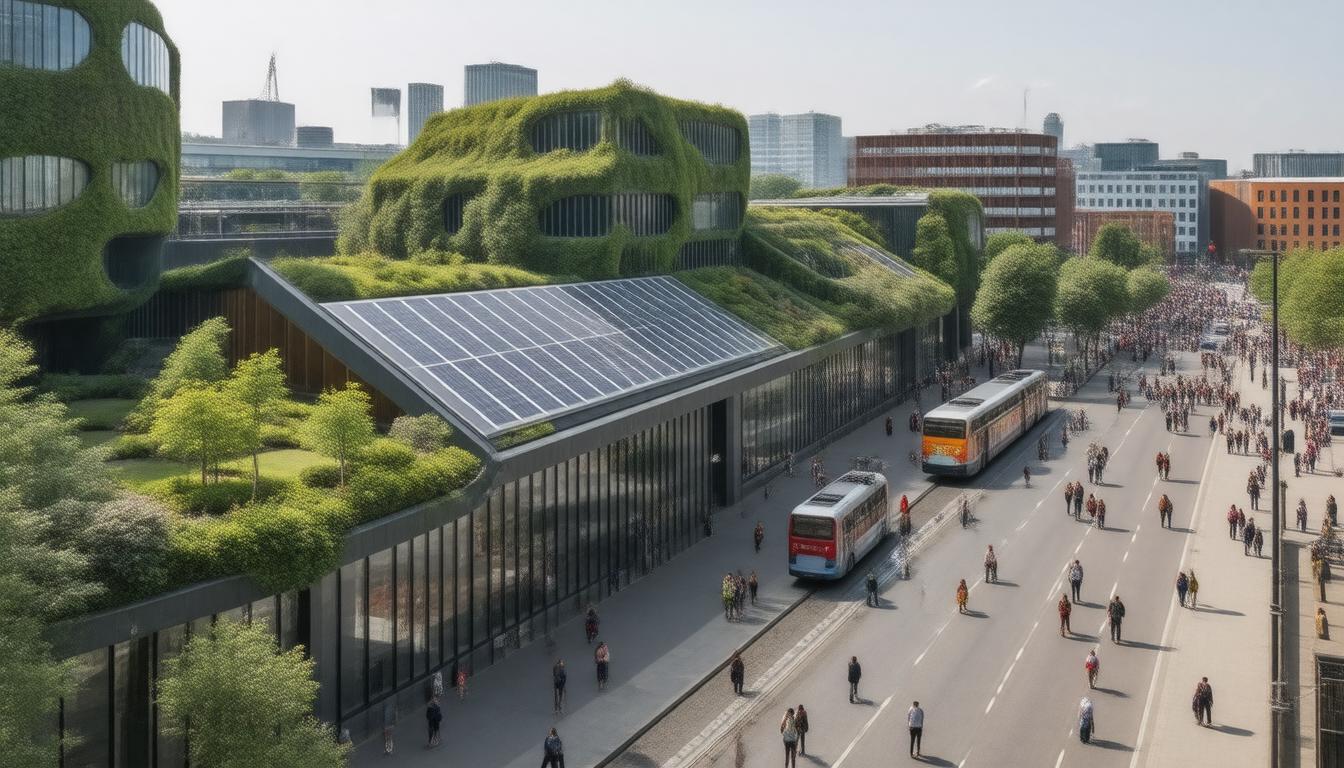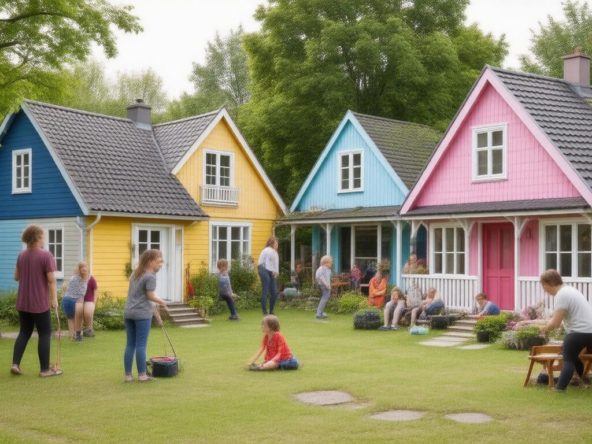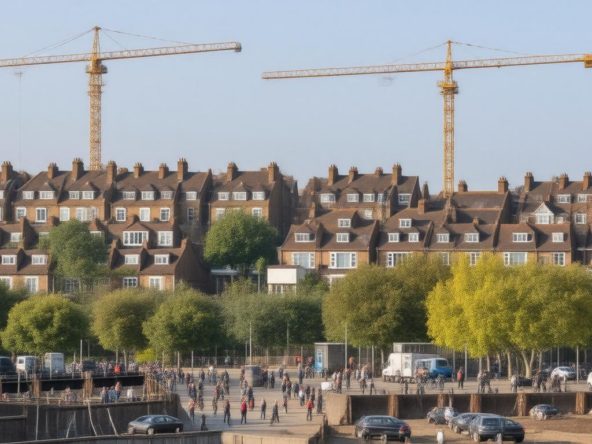Urban development in British cities is undergoing a transformative shift, driven by a confluence of factors that aim to enhance the livability and sustainability of urban spaces. As populations swell and climate concerns intensify, urban planners and developers are increasingly adopting innovative approaches to reshape the landscapes of their cities. This article explores the key trends and practices shaping urban development in the UK, including sustainable practices, the integration of advanced technology, and the importance of community engagement. Furthermore, it evaluates the future challenges and opportunities that lie ahead for British urban landscapes, and how these changes could redefine the way we interact with our urban environments.
Key Takeaways
- Urban development in British cities is evolving to meet modern needs.
- Key trends such as mixed-use spaces and green infrastructure are shaping urban landscapes.
- Sustainable practices are becoming essential in urban planning to combat climate change.
- Technology is playing a pivotal role in transforming how cities are planned and managed.
- Community engagement is crucial for successful urban development projects, ensuring local needs are met.
1. Introduction to Urban Development in British Cities
Urban development in British cities refers to the complex processes that transform urban spaces through planning, investment, and policy implementation aimed at accommodating growing populations and enhancing economic vitality. In the UK, urban development has been characterised by a history of industrialisation, regeneration, and modernisation, influencing not only the physical landscape but also the socio-economic dynamics of urban areas. Cities like London, Birmingham, and Manchester have seen significant transformations, heavily driven by governmental initiatives, the private sector, and community engagement. With the challenges posed by climate change, social inequality, and housing shortages, contemporary urban development strategies are increasingly focused on sustainability and inclusivity, as well as on the integration of smart technologies (Hall, 2014). The importance of these strategies is underscored as they aim to create resilient urban environments that can effectively support future growth while enhancing the quality of life for all residents.
2. Key Trends Shaping Urban Landscapes
Urban development is profoundly shaped by several dynamic trends that are influencing city planning and infrastructure design. One of the most significant trends is the push towards sustainability, which prioritises eco-friendly practices and green building techniques. Cities are increasingly integrating parks, green roofs, and other natural elements into urban landscapes to combat urban heat and improve air quality (Gehl, 2010). Furthermore, the rise of smart cities, driven by advancements in technology, allows for more efficient resource management and enhances the connectivity of urban environments (Batty et al., 2012). Another trend transforming urban development is the emphasis on mixed-use developments that foster community interaction and reduce reliance on automobiles by combining residential, commercial, and recreational spaces (Jacobs, 1961). Lastly, the impact of socio-economic changes, including the rise of remote work, is prompting cities to rethink their spatial dynamics, with a growing focus on livable, walkable neighbourhoods that cater to changing lifestyles (Florida, 2020). Understanding these trends is crucial for urban planners and policymakers aiming to create resilient, inclusive urban areas that meet the needs of their populations.
‘We shape our buildings; thereafter, they shape us.’ – Winston Churchill
3. Sustainable Practices in Urban Planning
Sustainable practices in urban planning are increasingly recognised as essential for fostering urban development that meets the needs of present populations without compromising the ability of future generations to meet their own needs. Central to sustainable urban development is the concept of integrating environmental considerations into city planning processes. This involves adopting measures such as green building standards, which promote energy efficiency, and reducing the carbon footprint of buildings (UN-Habitat, 2021). Additionally, sustainable urban planning emphasises the importance of creating green spaces that enhance biodiversity and improve the quality of life for residents by providing recreational areas and promoting mental well-being (European Commission, 2020). The use of public transport systems over private vehicles is another key element, as it contributes to reduced traffic congestion and lower emissions, fostering a healthier urban environment (Planning Commissioner, 2019). By prioritising sustainability, cities can facilitate resilient urban development that not only addresses immediate needs but also preserves resources for future inhabitants.
4. The Role of Technology in Urban Transformation
The ongoing integration of technology into urban development is reshaping cities worldwide, leading to more efficient, sustainable, and livable environments. Smart technologies—including the Internet of Things (IoT), artificial intelligence (AI), and big data—are increasingly being employed to enhance urban infrastructure and services. For instance, IoT devices facilitate real-time monitoring of public resources such as water and electricity, aiding in better resource management and waste reduction (Kitchin, 2014). Furthermore, AI algorithms are being used to optimise traffic flow and reduce congestion through intelligent transportation systems that adapt to changing conditions (Zheng et al., 2018). This tech-driven approach not only improves operational efficiencies but also enriches citizen engagement by providing platforms for public feedback and participation in urban planning processes (Hollands, 2008). As cities continue to evolve through technology, the ultimate goal remains to create urban spaces that cater to the needs of their inhabitants while addressing challenges like climate change and population growth.
5. Community Engagement in Urban Development Projects
Community engagement plays a crucial role in urban development projects, as it ensures that the needs and concerns of local residents are taken into consideration in planning and implementation phases. Engaging community members allows for a more inclusive approach, fostering a sense of ownership and accountability towards the urban spaces they inhabit. This involvement can occur through public meetings, surveys, and workshops, which facilitate dialogue between planners, developers, and residents (Burgess & Harrison, 2018). Such participatory methods not only enhance the relevance and sustainability of urban development projects but also help in building community trust and resilience against potential social conflicts (Kahn, 2019). Moreover, addressing local aspirations and cultural contexts in urban developments can lead to more vibrant, functional, and aesthetically pleasing urban environments that better serve the community (Houghton, 2020). As cities continue to grow and evolve, prioritising community engagement within urban development initiatives not only enriches the planning process but also contributes to long-term success and social cohesion (McKenzie, 2021).
Overall, it becomes evident that engaging with community stakeholders is not merely a procedural requirement but a strategic imperative that enhances the efficacy of urban development outcomes.






